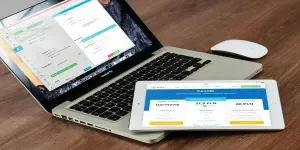Research conducted by S&P Global showed that over 90% of companies agree that data is more important in their decision-making. Another study revealed that 78% of individuals indicate that analyzing data for decision-making would critically change how their company conducts business. 71% of the same respondents further agreed that the practice would generate more revenue streams and opportunities for their business within a few years.
Statistics like these show that businesses aiming to succeed in today’s competitive landscape are beginning to realize the value of data and its influence on their decision-making process. This is also why data-driven organizations are 19 times more likely to stay profitable and 23 times more likely to beat their competitors in customer acquisition.
Therefore, if you want to harness insights from data to improve your business, this article has everything you need to know to get ahead with data-driven decision-making in 2024!
Table of Contents
What is data-driven decision-making?
Benefits of data-driven decision-making
How to implement a data-driven approach
Conclusion
What is data-driven decision-making?
Data-driven decision-making, often abbreviated as DDDM, refers to the process of gathering and analyzing historical data for the sole purpose of using insights to influence crucial business decisions.
DDDM is not just about looking at website analytics or sales and consumer data in order to facilitate what steps to take next. It involves developing a well-laid-out approach to collect and analyze the necessary data, and to implement decisions based on insights without any bias, intuition, or gut feelings. However, there is a need to invest in quality tools and skills to facilitate this approach.
Benefits of data-driven decision-making
The benefits of data-driven decision-making cannot be over-emphasized. Businesses that extensively utilize the power of data to make vital business decisions are able to gain an edge over those that don’t. Have a look at some of its advantages.
1. Increased agility

When data guides decision-making, businesses become more agile. It becomes easy to identify business opportunities sooner, detect issues early, and swiftly adapt to market shifts. A great example is Starbucks’s strategy, where, after closing many stores in 2008, CEO Howard Schultz pledged to utilize data to make smarter location choices.
Today, the company works hand in hand with a location analytics firm and consults regional team members to analyze demographics and traffic to select prime locations. This data-driven approach helps Starbucks predict a location’s success before committing resources.
2. Make better-informed decisions

Previously, businesses relied on intuition for decision-making, which was prone to errors. Now, decision-makers utilize data analytics to help them make better decisions free from bias.
Data-driven business strategies have shown to be more successful; companies that use this strategy have a 23 times higher customer acquisition rate, a 6 times higher customer retention rate, and a 19 times higher profitability rate.
Take ecommerce giant Amazon, for instance, which uses predictive analytics to predict customer demand, which helps them know what people are likely to purchase and when. With these insights, they can ensure that their distribution centers are adequately stocked with goods to meet the expected demand.
3. Cost savings

Data-driven decision-making enables businesses to pinpoint areas for cost savings and efficiency gains. They are able to analyze expenses, sales, and customer behavior data, which helps them optimize processes and trim unnecessary expenditures.
Coca-Cola, for example, despite heavy spending on marketing and ads, makes use of data analytics, image recognition, and artificial intelligence to target its audience more effectively.
The company creates personalized, hyper-targeted ads by analyzing social media posts mentioning their products and discerning customer sentiment. This resulted in a significant 4x increase in clickthrough rates.
4. Enhanced strategic planning

Data-driven decision-making enhances strategic planning by providing companies with insightful information for setting realistic goals, assessing strategy feasibility, and aligning resources effectively.
For instance, Walmart analyzes sales data to plan inventory levels for upcoming holiday seasons. In order to make well-informed judgments regarding which items to stock, how much inventory to carry, and where to invest resources for marketing and promotions, they look into historical sales trends, consumer preferences, and market demand.
This data-driven approach ensures that they optimize their operations, minimize risks, and maximize profitability during the busiest time of the year.
5. Better customer experience

Companies generate data representing their target audiences, providing valuable insights into their preferences, behaviors, and needs. Harnessing this data through data-driven decision-making is the key to improving the user experience.
Netflix is one company that uses big data analytics to improve their customer’s entertainment experience. By analyzing vast amounts of data from their subscribers, such as content preferences, search history, viewing patterns, and location, the Netflix algorithm provides individualized recommendations leading to better experiences.
In addition to this personalized approach enhancing experiences, it leads to long-term customer satisfaction, stimulating stronger and more meaningful relationships between your business and your customers.
How to implement a data-driven approach
To practice data-based decision-making, you must collect and analyze historical information and make decisions based on what has worked in the past. If you are wondering how this is done, here are the key steps to follow when using data to influence your business choices.
1. Set clear objectives

Before embarking on a data-driven journey, it’s important that you set clear objectives. This involves clearly defining what you want to accomplish and the specific questions you want to answer with data analysis.
Some objectives you may want to set include optimizing your supply chain, improving customer experience, or finding new market opportunities. Once you have clearly defined your goals, it paves the way for data collection, ensuring the findings are relevant and actionable.
2. Collect relevant data

Once you have clearly defined your objectives, the next step is to find and gather relevant data. Here, you need to determine different types of data you need that will help answer your questions to your objectives effectively.
You can collect data from customer feedback, market research reports, social media platforms, or internal databases. These data sources have vital information on things you want to find out, like financial data, market trends, customer behavior, or product performance.
When collecting this data, it’s essential to ensure that it is accurate, complete, and reliable. Surveys, interviews, and automated data collection tools are some of the techniques you will want to employ when collecting data.
3. Analyze and interpret the data

After collecting data, the next step is analysis and interpretation. At this stage, there is a need to utilize proper data analysis methods, including statistical analysis, data mining, or machine learning algorithms.
Using these techniques assists in uncovering patterns, trends, and insights that will guide you in making the decision. Data visualization tools will suffice when dealing with complex data sets as they can help present it understandably, making it easy for interpretation.
4. Make informed decisions

Insights gained from the data analysis should help you make an informed decision.
Think about the benefits and drawbacks of each choice, as well as the potential risks, and then make decisions based on data-driven insights rather than just your gut feeling or previous experiences.
When making judgments, consider qualitative and quantitative data to ensure that your choices align with your company’s goals.
5. Test and optimize continuously

The process of developing a data-driven business is progressive and requires constant adjustments to be successful. Testing different approaches and monitoring the various outcomes is the last step recommended to optimize performance and make changes where necessary.
One of the testing methods is A/B testing, where you compare two web pages or elements to determine the most effective version, which can help you make strategic business decisions. Keep refining your approach if new data emerges or if there is a change in market trends.
This leads to continuous improvement, allowing you to adapt quickly to an ever-changing business landscape before competitors do.
Conclusion
Evidence-based decisions are valuable for any business, from improving operational efficiency and customer experiences to saving on costs.
Instead of relying on past experiences, DDDM is backed by factual data from extensive research; therefore, it is relevant in influencing a company’s decisions, whether to steer sales or gain insights into their operations, productivity at the workplace, or effectiveness of decisions.
Data is a 21st-century tool that ensures you stay afloat only if you incorporate it into your business decision-making. And finally, remember to follow Alibaba.com Reads to stay updated with essential trends in the world of ecommerce.



